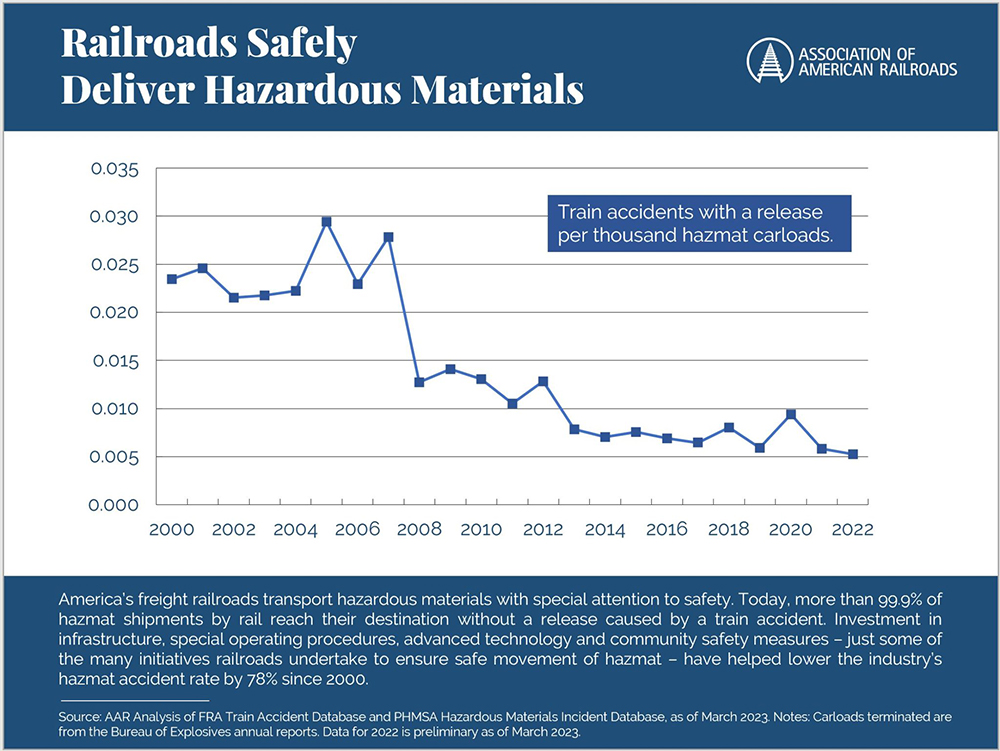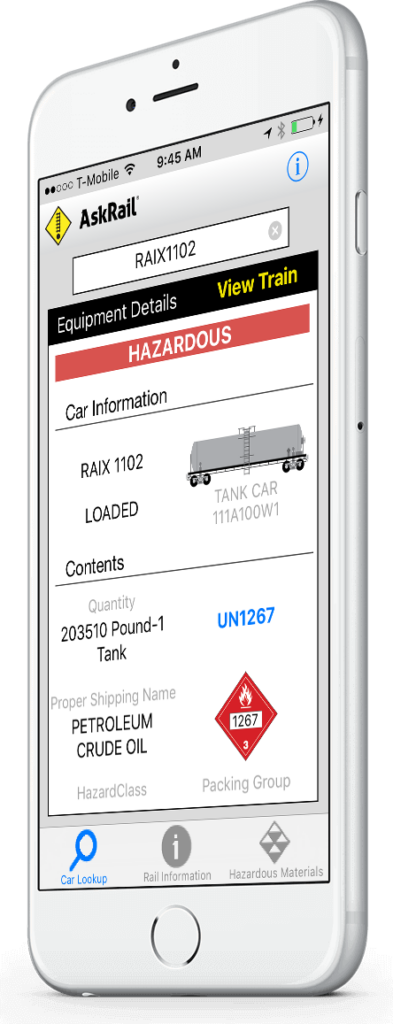Washington, DC — Rail safety is at the political and public forefront following the East Palestine derailment in February. For railroads, safety is always top of mind—priority number one. Across all aspects of operations, rail carriers routinely exceed federal safety mandates, and they’ve also consistently called for tougher safety standards like tank car improvements.
The data tells this story, one where railroads are hitting new safety records consistently.

Just last month, the Federal Railroad Administration (FRA) released new safety data showing that the last decade was the safest ever, with metrics like the mainline accident rate and the track-caused accident rate down 44% and 55% respectively since 2000.
In fact, the hazmat accident rate is the lowest it’s ever been based on preliminary Bureau of Explosives data, with a 78% decrease since 2000.
Getting to Zero
Still, rail companies recognize that the ultimate goal is a future with no accidents or injuries. The Association of American Railroads last month announced safety measures that railroads as an industry would be taking together in the “drive to zero accidents.”
“Rail is indisputably the safest way to move dangerous commodities,” said AAR President and CEO Ian Jefferies. “Yet we fully appreciate that these data do not comfort the residents of East Palestine and that public trust must be restored through action. Until we achieve our goal of zero, we will maintain our fierce commitment to getting there.”

There were seven new safety measures announced by the AAR in total, with a focus on preventing incidents though increased emphasis on hot bearing detection. The spacing between these detectors, per a commitment from all Class I railroads, will decrease from 40 miles to 15 miles on key routes. The temperature threshold that triggers an inspection will also now be lowered across the industry, and railroads will share trending data to identify bearings that need to be proactively addressed.
Community Preparedness
While railroads work to close the accident gap through steady investment and technological innovation, it is still vital to work with communities on preparedness.
To this end, rail companies train roughly 20,000 state and local emergency responders every year on handling rail incidents. About 2,000 of these officials every year receive immersive training with full-scale scenarios at the world-class Security and Emergency Response Training Center (SERTC) in Pueblo, Colorado. SERTC is a member of the National Domestic Preparedness Consortium (NDPC), which fully funds local, state, tribal and territorial first responders to attend any of SERTC’s DHS/FEMA-certified courses. You can find the 2023 course schedule here.
Another safety commitment of railroads is to expand access of its mobile app, AskRail, to more first responders. Currently, about 50,000 first responders can use the app to obtain instant information about the hazmat a railcar is carrying. Railroads want to double this number by the end of the year. They’re also increasing outreach to state fire associations to bolster app enrollment.
Rail ultimately remains the safest way to move dangerous commodities like hazmat—we see this in the data. Yet rail carriers are striving every day to improve this record because no accidents are acceptable accidents to the communities that railroads connect.


